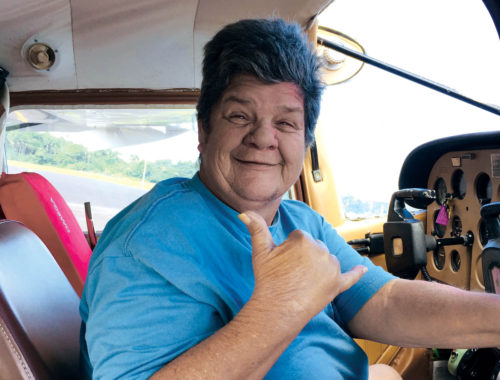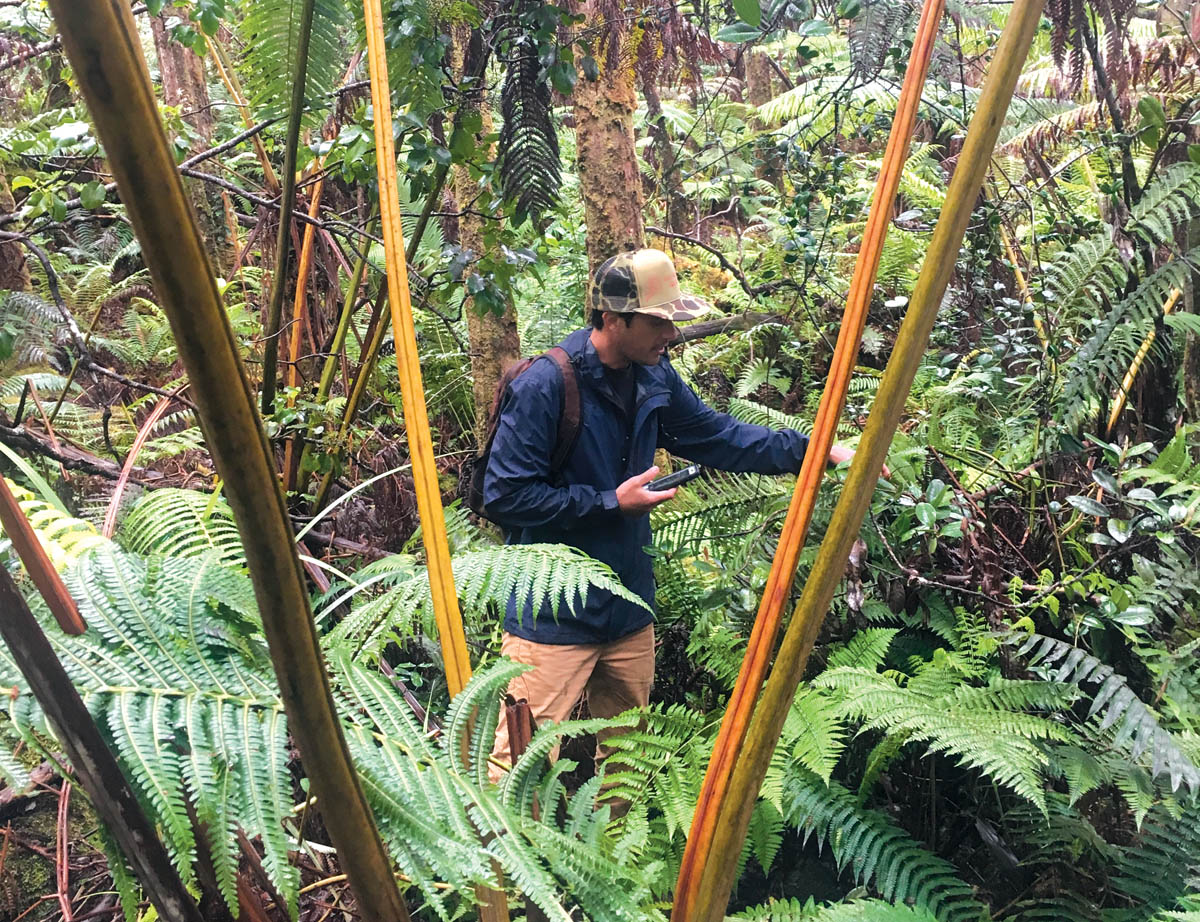
Hawai‘i County’s Innovative Native Forest Dedication Program Provides Tax Incentives for Preservation and Restoration

By Mālielani Larish
Did you know that special tax incentives exist for Hawai‘i County landowners who want to restore or preserve native forest on their land?
The County of Hawai‘i Real Property Tax Division initiated the Native Forest Dedication Program in 2004, enabling landowners with existing native forest to benefit from a reduced property tax rate once enrolled.
Thanks to the shared vision of a diverse group of professionals, the program now features more attractive financial incentives and expanded choices for dedications, making it the most comprehensive initiative of its kind in the state. To get started, the property needs to be three acres or larger and privately owned (or have a long-term lessee).
Since dedication projects demand a long-term investment of time and money, the renovated program rewards this commitment by enabling eligible landowners to start receiving tax breaks once they have an approved forestry management plan. By creating this much-deserved tax benefit, the Native Forest Dedication Program recognizes the importance of thriving native forests to the well-being of our island and the planet.
Two New Pathways to Dedication
Under the program, landowners who have already poured years of labor into their property to achieve 60% native species forest cover (or who were lucky enough to buy a property rich in native species) qualify for a “Native Forest Preservation” dedication. However, many landowners will need to begin with a “Restoration” dedication instead, meaning that they will need to cultivate a native-dominated forest on their land. As anyone who has tried to battle invasive species, install fences, or coax plants to grow out of degraded soil can tell you, restoration work can quickly drain the body and the wallet.
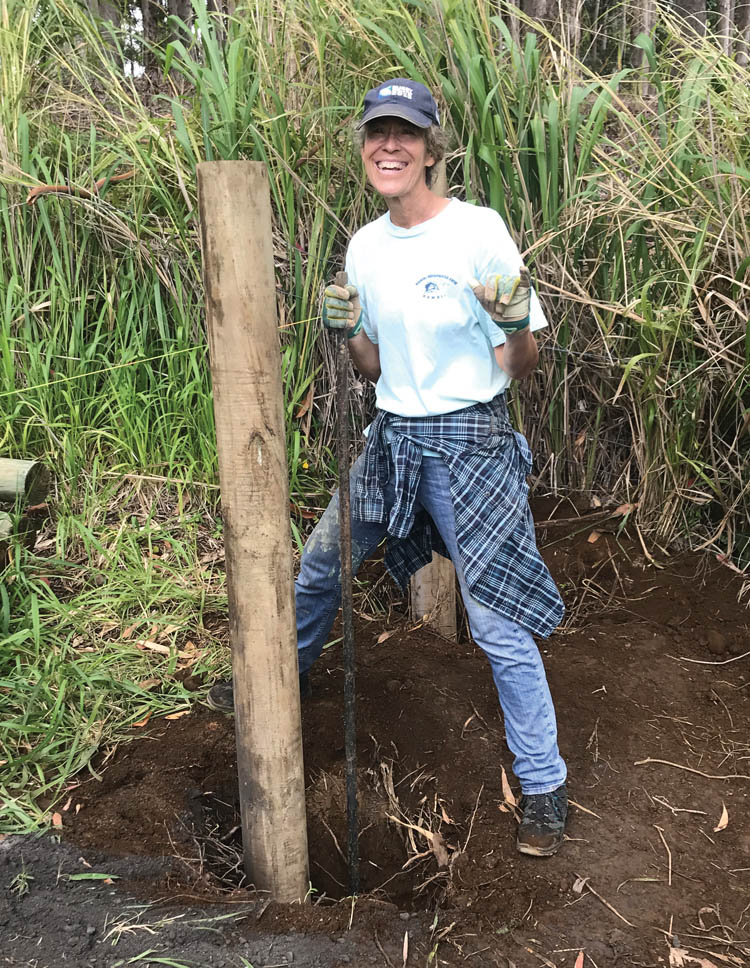
Leslie Cole-Brooks, the attorney who penned the legislation behind the program’s revamp, knows this first-hand because she initiated a small-scale native forest restoration project on her property. The two new categories help address the many challenges underlying forest restoration by making the process more affordable and practical.
Although the Native Forest category is the gold standard, Leslie says that the two new categories—Functional and Successional—help create a “glide path” to restoration.
The Functional Forest pathway allows landowners to combine the planting of natives with the planting of certain “functional” species, which are non-native, non-invasive species, that, as Leslie describes it, “play well with others.” The installation of these functional species provides freshly-planted natives with benefits such as windbreak, shade, moisture retention, and nutrients, thus filling essential ecological niches that would otherwise have been filled by fully-mature natives. These functional plants protect the slow growing natives against the constant threat of rapidly reproducing, resource-hogging invasive species, with the key being that the functional species themselves do not become aggressive.
Recognized functional species include fruiting trees like orange, lychee, and mango; ornamentals like hibiscus, plumeria, and gardenia; and Polynesian introductions, such as ‘ulu (breadfruit), mai‘a (banana), ‘ōlena (turmeric), and kukui (candlenut). A landowner who enters into a Functional Forest Restoration commits to having 60% of forest cover comprised of native and functional species by the end of the 20-year dedication period.
The second new forest category acknowledges the fact that we live on a volcanically active island—only landowners who are situated on new or very recent lava substrate (and thus have a soil/organic matter depth of less than 10 centimeters) can participate in this pathway. Property owners who enter into a Successional Forest Restoration agree to develop a Native Forest or Functional Forest on their land by the end of the 50-year dedication period.

Liko Nā Pilina: Planting Seeds of Success
The origin of the Functional Forest category began with native seeds that didn’t sprout. Starting in 2004, Rebecca Ostertag and a team of students and colleagues began to remove invasives from experimental plots at Keaukaha Military Reservation, with the goal of evaluating how the remaining native plants would fare. Rebecca, who is a biology professor at University of Hawai‘i at Hilo, and the associate program chair for the Tropical Conservation Biology and Environmental Science (TCBES) graduate program, hoped that this “passive restoration” method would give the native plant species the opportunity to regenerate from the existing seed bank. The results were discouraging; whereas natives returned sparingly, invasives returned robustly. Rebecca and her colleagues turned to functional trait theory, asking, “Can we create a forest that is more resistant to invasion by planting a combination of native and functional species?”
Starting in 2013, Rebecca and her collaborators planted four combinations of native and functional species in the experimental plots, naming the project the Liko Nā Pilina Hybrid Ecosystems experiment. Six year later, Rebecca and Susan Cordell, who is the director of the Institute of Pacific Islands Forestry in Hilo, presented their findings to the County: the plots that contained a mix of native and functional species exhibited more native species regeneration, lower nutrient cycling, and decreased invasion when compared to the native-only plots.
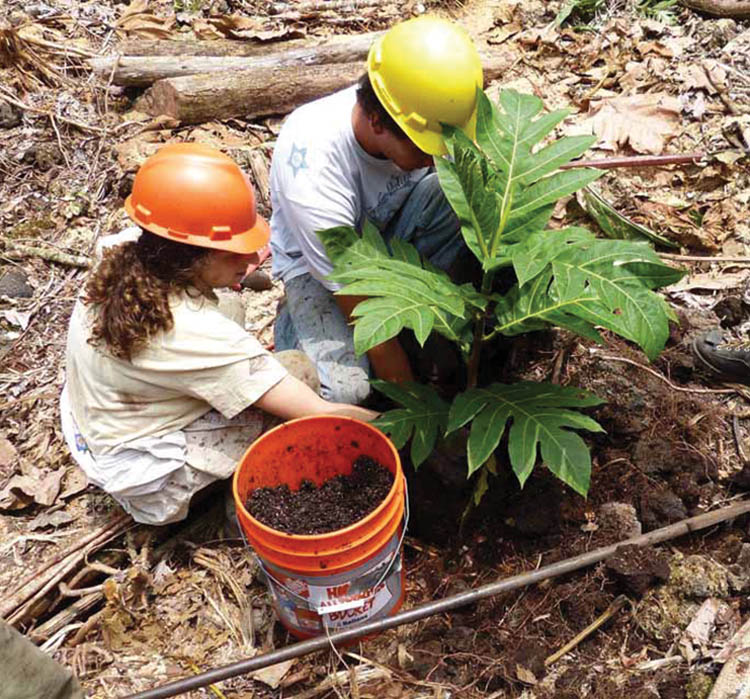
Lisa Miura, administrator of the County of Hawai‘i Real Property Tax Division, wanted to integrate these scientific findings into the structure of the Native Forest Dedication Program. Serendipitously, Lisa met with Leslie Cole-Brooks, the lawyer who had resolved to work on the project on a pro bono basis even before the meeting.
After working as a legislative advocate on behalf of renewable energy companies on O‘ahu, Leslie moved to Hāmākua on Hawai‘i Island in 2018. She was inspired by the spirit of aloha ‘āina (love for the land) that she experienced here, and she felt called to work on the forest restoration component of the climate change puzzle. As she dug into the financial aids and incentives available to property owners engaged in native forest work, she discovered the County’s property tax code for Native Forest Dedications.
“It had great goals and good intent,” Leslie reflects, “but the section on restoration needed to be updated.” Leslie took a year off from work to devote her professional skills to the task.
Soon, an informal working group formed, comprised of Leslie, Rebecca, Lisa Miura, and Keita Jo of the County of Hawai‘i Real Property Tax Division, and a student intern from University of Hawai‘i at Hilo TCBES graduate program, Sebastian Ma‘a.
Rebecca says, “We all got along really well together. It’s been a great journey because it all clicked.”
When the working group’s efforts culminated in the introduction of Bill 178 to the County Council, Leslie recalls that the bill sailed through the legislative process. “We had unanimous ‘yes’ votes at all three hearings!” The changes went into effect on January 1, 2020.
Thanks to the work of Sebastian, who has since earned his master’s degree and now works as a biocultural forester, landowners seeking to participate in the Native Forest Dedication Program have three invaluable resources: a Management Plan template, a species list of native and functional species, and a nursery list of businesses specializing in native plant propagation.
Why Native Forests?
Jill Wagner, who has devoted her career to reforestation and seed banking, calls the revamped program a “win-win situation.” Landowners, forests, and every island resident benefits, owing to the ecosystem services and life-enriching opportunities that forests provide. In her role as chief forestry officer for Hawai‘i-based Terraformation, Jill has clients who are planning to apply to the program. She appreciates how the program’s new categories encourage landowners who want to start projects on degraded land, and she highlights the fact that native forest restoration helps capture carbon and preserve biodiversity not only for Hawai‘i, but as a gift to the earth.
Native forests are the unsung heroes of our island home: they prevent erosion and protect our beautiful reefs from sedimentation, serve as an integral part of water processing and purification, provide recreational opportunities, and serve as the home of numerous threatened and endangered organisms. In addition, native forests inspire the oli (chants), mele (songs), and mo‘olelo (stories) of Hawaiian culture and support the collection of materials for cultural practices.
How Much Can I Save?
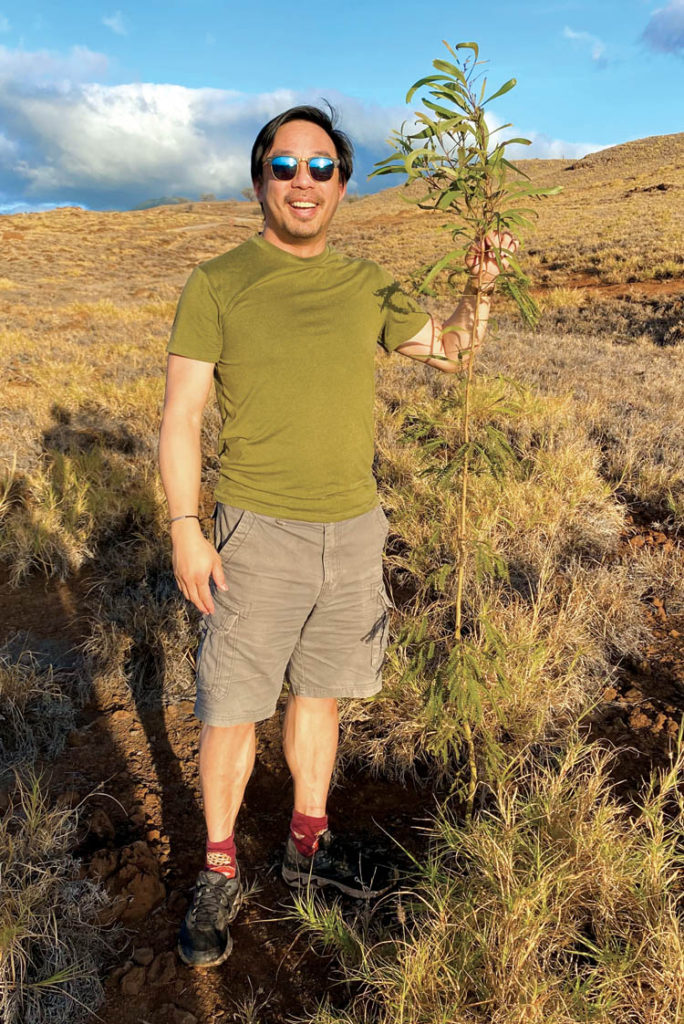
Keita Jo, assistant real property tax administrator of the County of Hawai‘i, emphasizes that the tax savings resulting from enrolling in the program will not offset all the costs associated with restoring and maintaining native forest. He calculates that a six-acre property with a market value of $209,000, if entirely dedicated as native forest, would save $1,754.15 in property taxes annually. At scale, the savings can accumulate generously: a 602-acre property with a market value of $3.5 million would save $32,571 per year in property taxes if every acre was dedicated as Functional Forest, and a 22-acre property (with market value of $1.49 million) that dedicates every acre to the Successional Forest category could save $13,722 in property taxes annually. Interested landowners are advised to call the County of Hawai‘i Real Property Tax Division directly—the staff there can help you determine your baseline eligibility.
There are many financial resources available to help owners who want to steward a forest on their land. It is worth noting that landowners can receive grant monies for this purpose and enroll in a Native Forest Dedication simultaneously.
“Putting in a Native Forest Dedication is a labor of love,” Leslie says. “It is a way to give back to the ‘āina, to the community, and to put something in that is going to be a legacy that will last well past you, for generations.” ❖
For more information:


